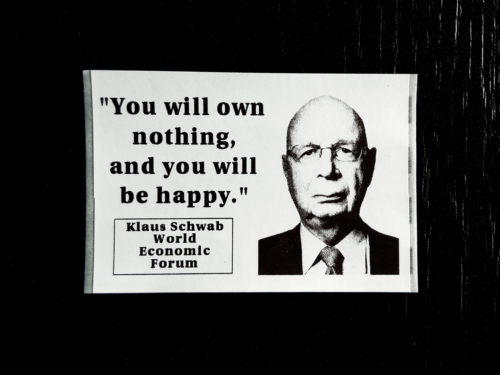
Display of Gold Bars
Historical Context: The Foundations of Monetary Policy
The evolution of monetary policy is deeply rooted in significant historical milestones, particularly those surrounding the independence from Great Britain and the establishment of the U.S. Constitution. The Magna Carta of 1215, a pivotal document in the history of democracy, emphasized the importance of governance based on law and established the necessity for fair taxation and economic rights. This early assertion of financial principles influenced colonial attitudes towards economic independence, fostering a desire for self-sustained monetary systems.
The American colonies faced numerous financial challenges under British rule, including restrictive economic policies and trade limitations. These conditions contributed to a growing sentiment for independence and the establishment of a government that would better address the financial needs of its citizens. Following the Revolutionary War, the United States grappled with economic instability marked by inflation and fluctuating currency values. The need for a stable monetary system became increasingly apparent as these economic conditions threatened the nascent nation’s credibility.
As we consider the lessons of economic history, it becomes increasingly evident that a return to a gold standard could serve as a modern counterpart to the foundational principles laid out during these formative years. By exploring the implications of stability and sound currency, we can better understand the ongoing relevance of these historical underpinnings within contemporary monetary discourse.
The Rise and Fall of Central Banking: Lessons from the Past
The formation of the first central bank in the United States, the Bank of the United States, in 1791 marked a significant turning point in the nation’s economic history. Established under the guidance of Alexander Hamilton, this institution was created to stabilize and improve the nation’s credit, handle government financial needs, and offer a uniform currency. The geopolitical context of this era, particularly the invasions and conflicts with Britain and England, played a crucial role in the genesis of central banking in America. These conflicts underscored a need for a centralized financial authority that could aid in managing public debts and facilitate trade when the nation was under financial duress.
Early banking in the United States was characterized by a reliance on tariffs and other fiscal policies to manage the economy. The government’s imposition of tariffs on imported goods served to protect burgeoning industries while generating revenue for public spending. These financial tools were essential in creating a stable economic environment that could support rapid expansion. The balance of power between trade and financial management became evident, as tariffs not only fostered industrial growth but also created a dependence on imported raw materials, leading to potential economic vulnerabilities.
As the country progressed through the 19th century, the banking landscape continued to evolve. The aftermath of the War of 1812 and the associated economic pressures emphasized the necessity of a more cohesive banking system that could respond swiftly to emerging challenges. Events such as the Panic of 1837 highlighted the fragility of non-centralized banking practices. The lack of a coordinated response to financial crises revealed the inefficiencies that could arise when multiple banking entities operated without an overarching authority. These historical precedents compel modern economies to reflect critically on the mechanisms of central banking and the lessons derived from their foundational experiences.
The Evolution of Currency: From Gold to Fiat
The transition from a gold-backed currency system to fiat currency represents a significant evolution in economic history, driven by a series of pivotal moments that shaped monetary policies worldwide. Historically, gold was synonymous with value; it served not merely as a form of currency but as a representation of trust in economic stability. However, various events and developments led to the gradual implementation of fiat currency, a system wherein the government maintains the value of money without backing it with a physical commodity.
One of the key turning points in this transition occurred with the introduction of income tax, particularly during the late 19th and early 20th centuries. The need to fund government activities and services led to this shift, which allowed for greater financial flexibility. Subsequently, the establishment of the Department of Revenue formalized the government’s role in regulating and collecting taxes, reinforcing state power over monetary value. The move to fiat currency facilitated the government’s ability to manipulate economic levers, impacting inflation and destabilizing traditional perceptions of monetary security associated with gold.
Another significant milestone was the first stock market crash in the United States in 1929, which revealed systemic weaknesses within the fiat currency system. The crash prompted a reevaluation of monetary policies, highlighting how fiat currency can lead to bubbles and subsequent collapses, unlike the inherently stable nature of gold-backed systems. The economic turmoil illustrated the risks of inflation, where the overproduction of money can devalue currency, eroding purchasing power and leading to long-term economic consequences. As we assess the implications of these changes, it becomes vital to understand how the shift from a gold standard to fiat currency has shaped contemporary economic landscapes and influenced the debates surrounding monetary policy today.
The Future of Money: Building an Economy Backed by Commodities
The discourse surrounding the future of monetary systems often brings attention to the potential reinstatement of a gold standard. Historical context reveals that economies grounded in tangible assets, such as gold and silver, have experienced stability amidst fluctuating socio-economic conditions. In an age marked by relentless inflation and market volatility, reverting to a commodity-backed currency may provide a unique remedy for current economic ailments.
One of the foremost advantages of a gold-backed system is the inherent limitation it places on governmental monetary policy. By restricting the supply of currency to the amount of gold in reserves, the risk of inflation significantly diminishes. This was evident during times when the gold standard was effectively employed, as it allowed economies to expand judiciously without succumbing to the year-on-year inflation rates experienced in fiat monetary systems. Furthermore, the stabilizing effect of commodities creates a predictable economic environment that encourages investment and savings—both vital elements for long-term economic growth.
Additionally, with the advent of modern technology, the logistics of managing a gold-backed currency system have become more feasible. Innovations such as blockchain technology can enhance tracking and the security of gold-backed digital currencies, making it easier to maintain the necessary reserves and ensuring trust in the system. As global trade continues to face disruptions and geopolitical tensions rise, a return to a commodity-based currency could act as a unifying factor for international transactions, fostering greater cooperation and reducing currency manipulation risks that often lead to conflicts.
In essence, considering the lessons we’ve garnered from economic history, a future anchored in commodities such as gold and silver may not only address prevailing economic challenges but also lay the groundwork for a resilient and prosperous global economy. Establishing a system that is inherently grounded in tangible assets could serve as a safeguard against the uncertainties of the modern financial landscape.
https://capital.com/commodity-backed-money-definition
Discover more from EAGLE HORIZON REPORT
Subscribe to get the latest posts sent to your email.


